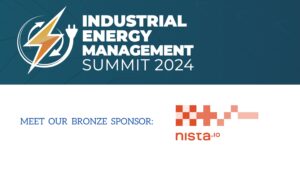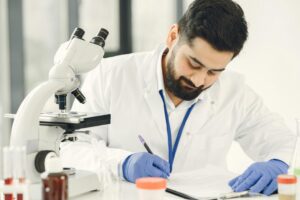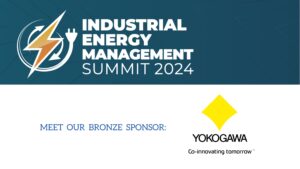Water is an essential resource of life and it supports businesses, communities, and ecosystems at once. The demand for sustainable water management is growing. The reason stands to be urbanization, population expansion, climate change, and more. It poses an even bigger challenge when it comes to gigafactories. These factories make large-scale production of lithium-ion batteries possible. Moreover, this engineering marvel has changed the electric car and energy industries. However, their sheer scale and complexity necessitate significant water resources for a range of operations. It includes cooling systems and electrode manufacturing.
It is a challenging task to handle this sustainable management of water. In this article, we will look at a comprehensive approach to this challenge. We will include management techniques, alternative sources, and more for sustainable water management. So, let’s get started.
Water Efficiency and Conservation Measures
The initial stages of sustainable water management in gigafactories include increasing water efficiency and putting conservation measures in place. By using these techniques, the facility’s overall water use may be greatly decreased. As a result, it will reduce the demand for nearby water supplies. So, let’s see these measures in detail:
Leak Detection and Repair
Given that plumbing system leaks can result in significant water losses, it is imperative to install an extensive leak detection and repair program. Water waste may be avoided by immediately identifying and fixing leaks. This is through routine maintenance and inspections.
Water Metering and Monitoring
It is essential to measure and monitor water usage accurately. This is to pinpoint high-consumption regions and adopt focused conservation measures. Facility managers may make educated decisions and evaluate the success of their water-saving efforts. It is by installing water meters and monitoring systems. These can give useful data on trends in water consumption.
Employee Training and Awareness
It’s also necessary to teach and train staff members on the value of sustainable practices and water efficiency. It will help to implement efficient water conservation techniques. A facility can promote a culture of water conservation by holding training sessions, and awareness campaigns. They can also give clear instructions on water-saving behaviors.
Performance Monitoring and Benchmarking
It is essential to periodically assess how well water conservation measures are working. It will pinpoint problem areas and evaluate advancement. Moreover, building water use benchmarks and key performance indicators (KPIs) can assist facility managers. This is in evaluating the success of their conservation initiatives and informing data-driven choices.
Water Recycling and Reuse
The gigafactory’s need for fresh water supplies may be greatly decreased by recycling and reusing its water. This technique reduces the amount of wastewater. One that needs to be discharged. As a result, it helps to protect the environment while also conserving water.
Greywater Recycling
Greywater is the term to describe wastewater from sinks, showers, and other non-industrial sources inside the gigafactory. This wastewater can be used again for several purposes after collection. Furthermore, this water can be in use for landscaping irrigation. It can also be in use for cooling tower makeup and even certain manufacturing processes. Ones that don’t require potable water after treatment.
Industrial Wastewater Treatment and Reuse
Industrial wastewater is often generated when batteries are manufactured. It can also be cleaned and used inside the facility. The water’s impurities can be removed using various techniques. It includes reverse osmosis, sophisticated oxidation techniques, membrane filtering, and more. As a result, it will make it suitable for reuse in cooling systems and electrode cleaning.
Process Water Reuse
Sustainable Gigafactories can look for the possibilities of reuse of process water from various phases of the whole process. For example – the water used for washing or rinsing in some operations can be put to reuse after appropriate treatment. It will eventually lead to less reliance on fresh water.
Closed-Loop Water Circulation Systems
Water consumption in gigafactories can be significantly reduced by using closed-loop water circulation systems. These systems’ internal water reuse and recirculation lessen the facility’s need for freshwater input and wastewater output. Modern treatment techniques like filtration and disinfection may ensure that the water that goes into recirculation meets the standards in requirement for various purposes.
Alternative Water Sources For Sustainable Water Management
Gigafactories need to find alternative sources, especially in places where freshwater resources are scarce. It will help to meet the needs of the operation. Furthermore, several options are available with their pros and cons. Let’s look at a few of the sources ahead:
Rainwater Harvesting
This method is one of the most adopted sustainable water conservation methods. It collects and stores rainwater for later use. Furthermore, sustainable gigafactories can install several rainwater catchment systems. It includes cisterns and storage tanks. It will help to use the rainwater from rooftops and many other surfaces. This is for landscape irrigation, toilet flushing, or even certain manufacturing processes.
Groundwater Utilization
In areas where groundwater resources are readily available, gigafactories can take advantage. Nevertheless, it is crucial to do a thorough hydrogeological study. It will help to see the sustainability of groundwater extraction. It will also aid in ensuring that the aquifers are not entering depletion beyond their recharge rates. Additionally, groundwater can also need proper treatment before it can be used for other purposes.
Seawater Desalination
In the case of a gigafactory located near seawater, it can become an ideal water source. Sustainable Gigafactories can use desalination plants using advanced technology. These include thermal distillation and more. It removes the salt and other impurities of the seawater. It can then be of use in any industrial process. However, the use of these systems can take up a lot of energy. Moreover, it leaves concentrated brine as a byproduct that needs good handling for minimum environmental impact.
Water Management Strategies and Best Practices
It takes a comprehensive strategy that incorporates several tactics and best practices throughout the facility’s design, building, and operation to implement sustainable water management in gigafactories.
Water-Conscious Facility Design
Sustainable water management requires the integration of water-efficient features and technology from the outset of design. This entails making water-saving equipment choices, adding rainwater collection systems, and planning buildings with the ability to recycle and reuse water in mind.
Water Stewardship and Stakeholder Engagement
Cooperation and participation are one of the core pillars of effective water management. It includes a variety of stakeholders. This includes local communities, water authorities, and environmental organizations. Furthermore, to avoid any conflict, make sure that any possible water dangers are properly managed. Additionally, the facility’s water consumption should always remain parallel to the local legislation and goals of sustainability. It might also be helpful to establish water stewardship programs and promote open communication.
Continuous Monitoring and Improvement
Sustainable water management is a continuous process. It needs constant observation and development. So, the facility’s water performance should be consistent and improved upon. Furthermore, it can be done by analyzing the patterns of water consumption regularly, determining areas for improvement, and seeing the efficacy of the measures of conservation.
Conclusion
Sustainable water management is crucial for gigafactories today. It is a method that can minimize the environmental impact while ensuring resilience in operations. By embracing the techniques discussed in the article, the goal of proper water management can be achieved.
If you want to learn more about gigafactory design construction and process, attend The Global Summit on Gigafactory Design and Construction, taking place on April 18-19, 2024, in Berlin, Germany. This event has industry leaders with rare insights, case studies, and in-depth sessions on technologies, approaches, etc that you can adopt for sustainability with profit. So, register right away!





